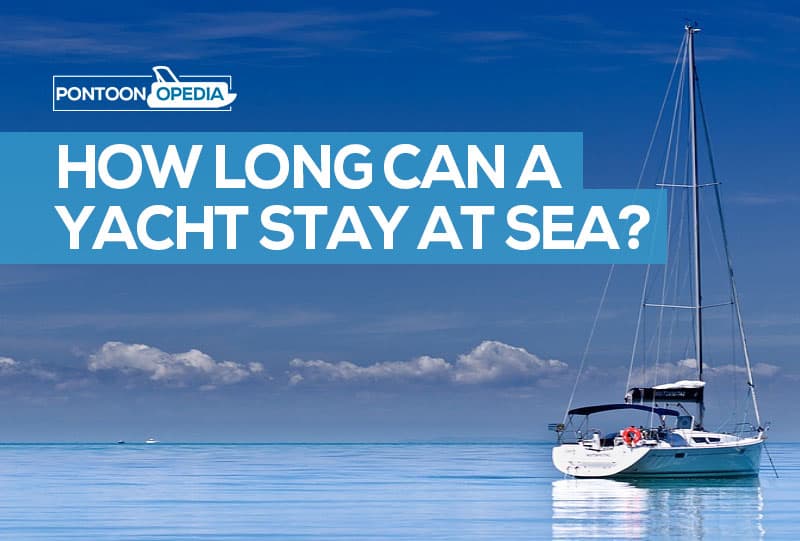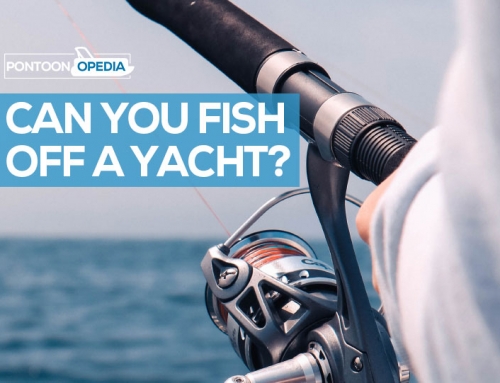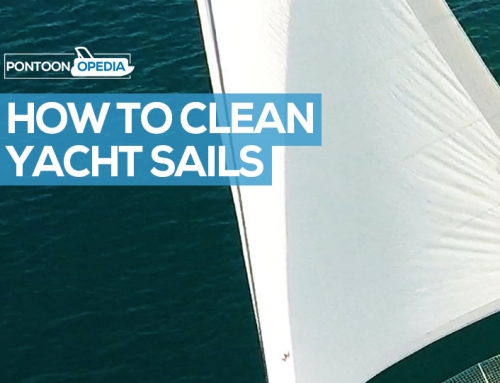Some people dream of life out on the high seas. In the old days, the idea of being a swashbuckling pirate appealed to youths around the world. Nowadays, the concept of yachting around the world seems to sit better with both the rising and aging generations. In a world growing increasingly chaotic, a life isolated out at sea looks more and more desirable. However, taking a yacht out to sea does have its limitations.
Just how long can a yacht stay at sea? How long a yacht can stay out at sea really does depend. While some yachts can allow a sailor to be out at sea close to two hundred days, others might restrict you to a month, possibly even just a couple of weeks.
When you want to go out into the ocean blue for a long time, the type of yacht you have and how much effort you’ve put into preparing and maintaining it will determine how long you can be out at sea.
Table of Contents
Types of yachts
Not all yachts are created equal. While some vessels are specifically designed to be useful for long voyages, such as crossing the Pacific Ocean or participating in month-long races, others are meant to be a nice little joy ride for a party of friends. In other words, several different categories of yachts are intended for different types of uses.
Category A yachts
Each group of yachts has different characteristics that make them ideal for different types of voyages. If you are aiming to make a long voyage out in rougher waters, a category A yacht would be the best choice. These yachts are known for being explorer vessels, and most ships considered long-range expedition ships fall within this category.
These ships are built with more durable hulls and can withstand waves up to twenty-three feet in height, as well as winds traveling at 47 knots, or over 47 nautical miles per hour.
These yachts are also built to be more self-sustaining, meaning that these ships are usually easier to run. They are also more likely to allow for large crew capacities and have larger fuel tanks as well as sails. Generally speaking, ships with sails are the much better option if you want to stay at sea for a long time, so you don’t have to worry about running out of gas.
Category B yachts
While category A yachts are great for harsh waters, category B yachts are more suited to offshore cruising with temperate weather. The ships are still able to withstand waves up to 13 feet high and fairly strong winds, but these ships aren’t built to withstand stormy weather.
However, if you’re planning to stick close to the coastline, these boats could be a good choice for your adventure at sea. If you’re sailing in a weather-wise calm area of the world and don’t need a self-sustaining boat, this category is for you.
Category C yachts
While a category B yacht would still be able to make it across the ocean if the weather were accommodating, category C yachts are more for used for inshore activities. A category C yacht is meant to stay close to shore and not out of the harbor for long periods.
These ships can only take up to eight-foot-high waves and are not very durable. However, they are a fairly popular pick for boating on lakes. So, if you plan to spend as much time possible out on a lake or other calm body of water, this vessel might be the right choice for you.
Category D yachts
The last category of yacht types is Category D. These boats are more likely to be smaller and are not designed to handle waves over four feet tall. These are a perfect choice if you plan to do more inland boating, such as on lakes and rivers. If you’re expecting to be a one-man crew for your boat and don’t feel comfortable taking a solo voyage on the open sea, consider taking a category D yacht and cruising a river to your heart’s content.
Preparing yachts for long voyages
While the type of yacht you rent or purchase will undoubtedly influence how long you can stay out at sea, doing everything you can to prepare for the voyage will also help determine how long you will last on the waves.
Motor or sail preparation
How long you can stay out on the ocean is highly controlled by your ship’s sailing or motor capabilities. If your yacht has no sails, then your time out of the harbor is fully controlled by how much gas you brought with you to allow your motor to run.
However, if your yacht comes with sails, the story is completely different. While sails are entirely dependent on the weather, chances are that you’ll eventually get enough windy days that you can make it back to shore as long as you are prepared in other areas.
Ship maintenance
If you’re planning to be isolated on the ocean for an extended period, it’s imperative you make sure your ship is in tip-top shape. If you’re using a motor, systems that are not up to date and in prime working order will put an extra drain on gas as more gas is used to make up for the lacking element.
If you’re planning on sailing, it is also imperative to make sure your ship is well maintained. If not, you might find yourself sail-less in the middle of the Atlantic Ocean.
If you’re planning to leave solid ground in exchange for rocky waters for two months, then you might want to upgrade your yacht in certain areas as well. Get the ship inspected to make sure every component is working as it should, and replace or repair any essential parts as needed.
Food preparation
If you don’t have the food and water for the journey, then the trip will be cut short. In this instance, making sure you packed enough fresh water or have a way of purifying ocean water to make it drinkable is the most important. You can always ration food. If you start rationing water, however, it will start affecting your health at a higher rate than a food ration would.
Make sure you have experiecne
While it is a fun fantasy to imagine yourself braving the ocean waves in a dependable yacht, you really shouldn’t be heading out without any boating experience, especially on any long yachting trips.
How successful your trip will be is dependent on your experience with maneuvering ships and ship parts. If you’re a sailing newbie and want to go on a long voyage deep into the ocean someday, it is best to get some practice sailing in an inland area first and then along the coast before striking out for the middle of a watery nowhere.
Conclusion
How long you can keep your yacht out at sea is entirely dependent on what kind of vessel you have and how well you have prepared for the yachting journey.
If you want to be sailing for two or more months, get an expedition boat, inspect it for any potential issues, and stash everything you think you might need in it. Do you want to go on a little vacation along a river? Consider getting a category C or D yacht.
Ultimately, while you can spend over half a year on a boat before needing to come in, look for the boating experience that best fits your vacationing style.






